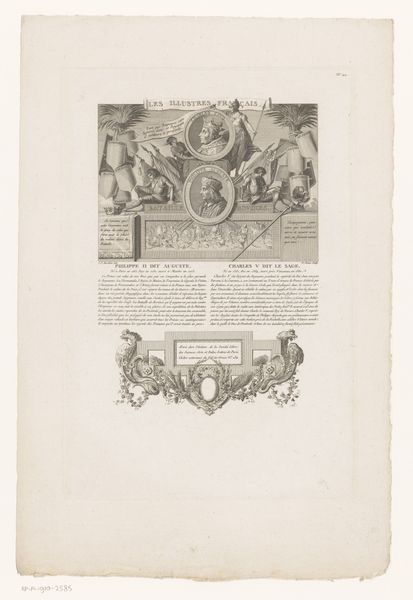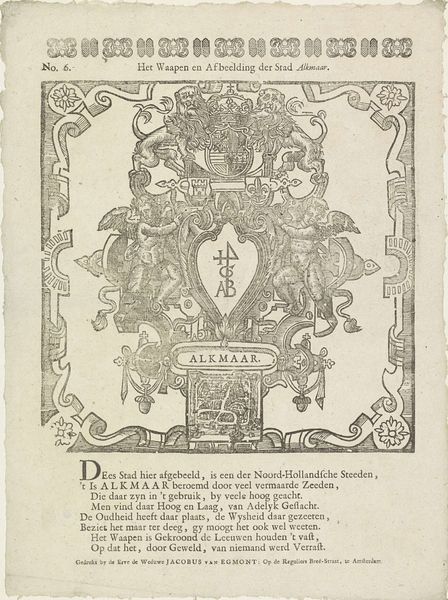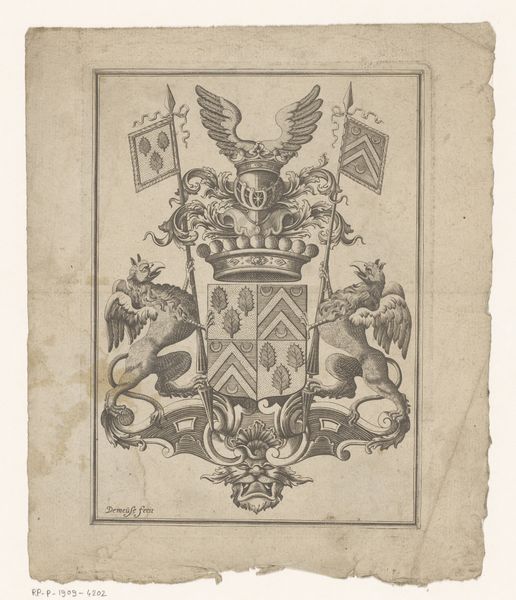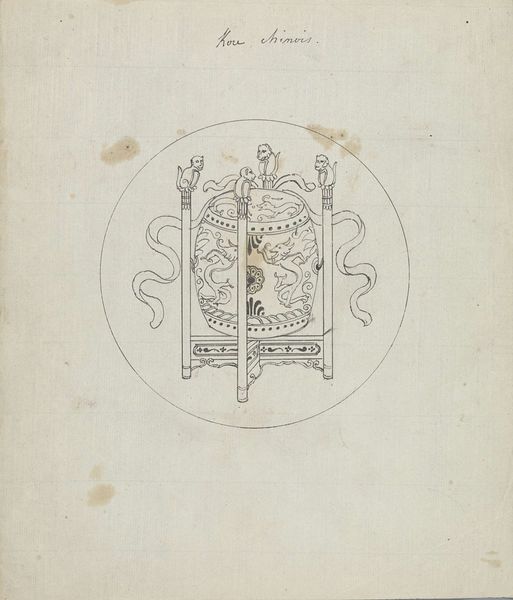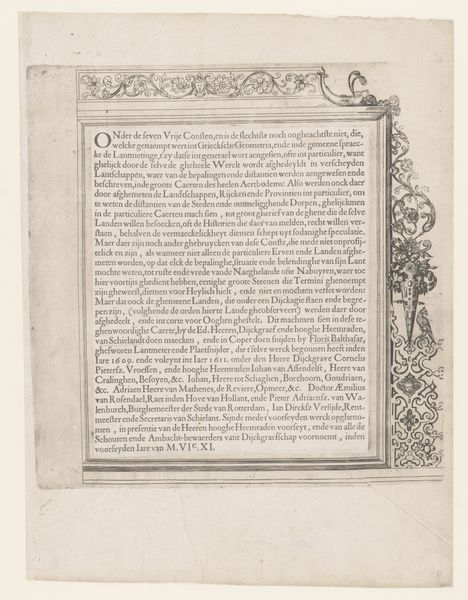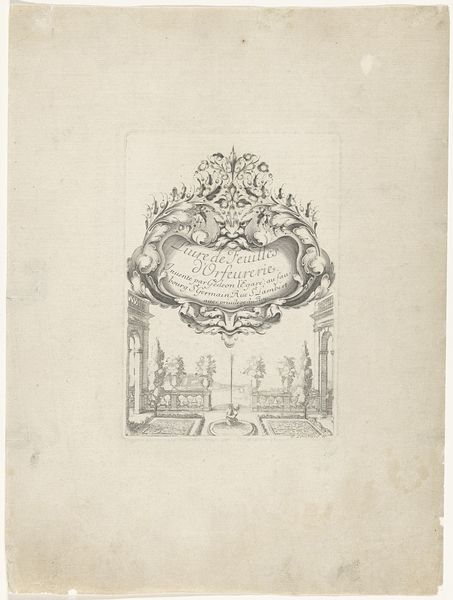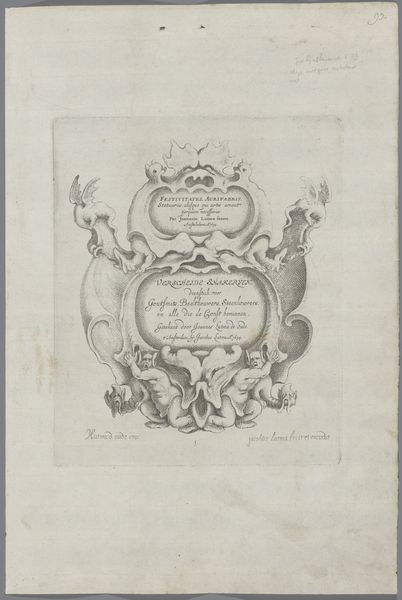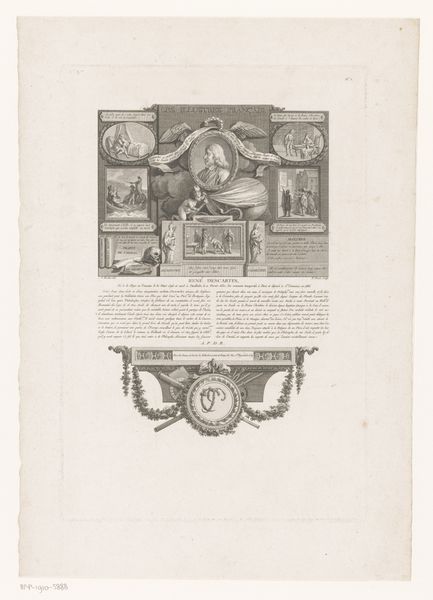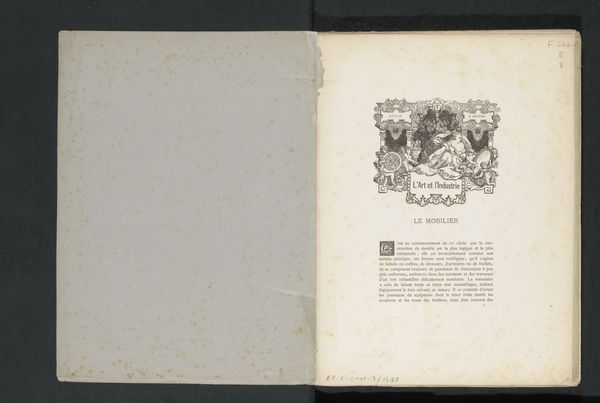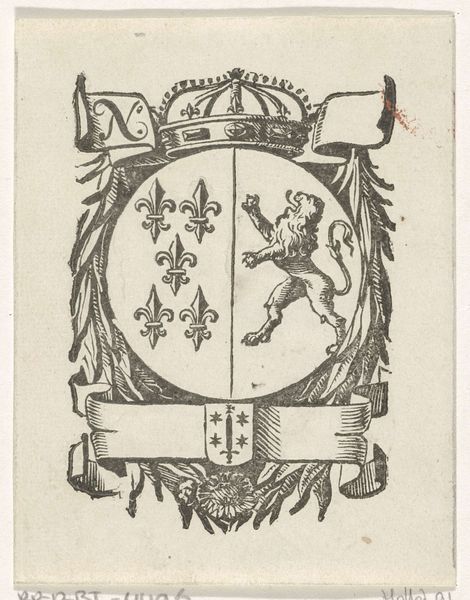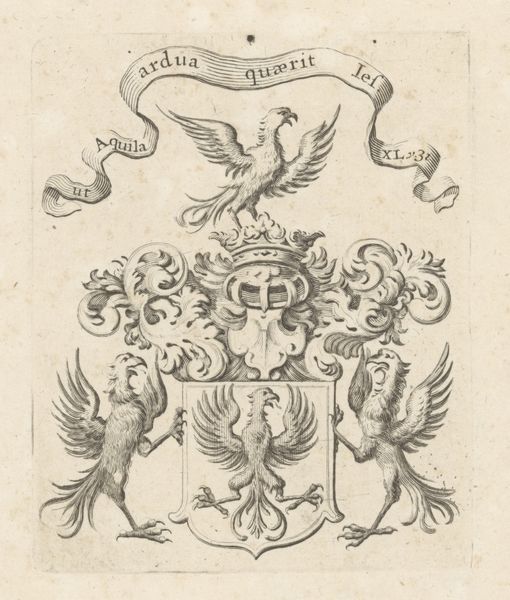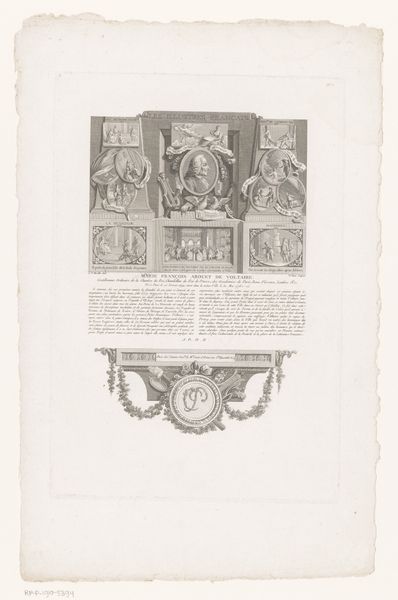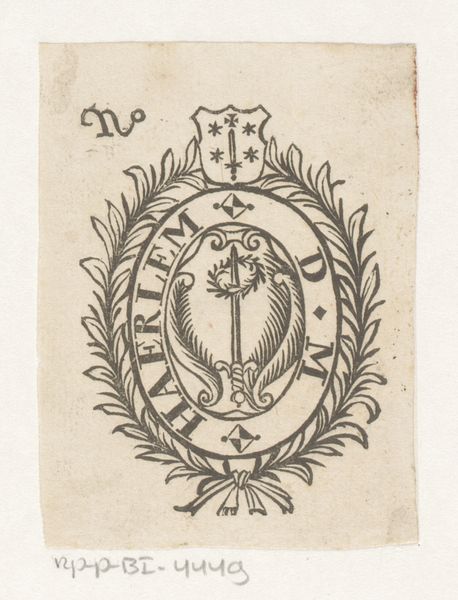
Wapenschild van graaf Willem II van Holland en tekstblad 1615
0:00
0:00
print, engraving
#
portrait
#
baroque
# print
#
text
#
engraving
Dimensions: height 163 mm, width 115 mm, height 127 mm, width 173 mm
Copyright: Rijks Museum: Open Domain
Editor: We're looking at "Wapenschild van graaf Willem II van Holland en tekstblad," a 1615 print by Floris Balthasarsz van Berckenrode. It strikes me as a blend of heraldry and early modern printing techniques. The text below this detailed crest makes me think of an official document or historical record. What are your thoughts on it? Curator: Well, let's consider the material context. This is an engraving, meaning an image etched into a metal plate, likely copper, and then printed. The choice of engraving suggests a desire for permanence, a deliberate effort to disseminate an official image connected with power, specifically, Willem II. Consider who would commission such a print. Editor: I guess it’s less about artistic expression and more about the mechanics of power… how it’s displayed, circulated, and consumed? Curator: Precisely. The detailed crest, with its eagles and lion, isn't just a decorative element. It's carefully constructed visual propaganda, conveying lineage and authority. Think about the engraver's labour too – the repetitive, meticulous process of transferring the design onto the plate. Editor: So, the ‘artwork’ becomes less about the artist's individual vision and more about the collective labor that brings this type of symbolism to the wider world? The choice of printmaking itself emphasizes mass production and the distribution of this symbol of power. Curator: Absolutely! And the text is vital. This is where you connect it with labour, because documents authenticate and empower that symbol and lend it legitimacy and a place within historical memory. Who produced the parchment or paper for it, how were the individual type pieces created for the text block, and where was it distributed? Editor: Okay, now I’m really looking at the details. It’s much more than just an image, it's a manufactured statement with many components that were intentionally made for a purpose. Curator: Indeed, analyzing the materials and their manipulation exposes the complex processes through which power was constructed and communicated. A lens beyond artistic creation, directly into a historicized industrial production process.
Comments
No comments
Be the first to comment and join the conversation on the ultimate creative platform.
